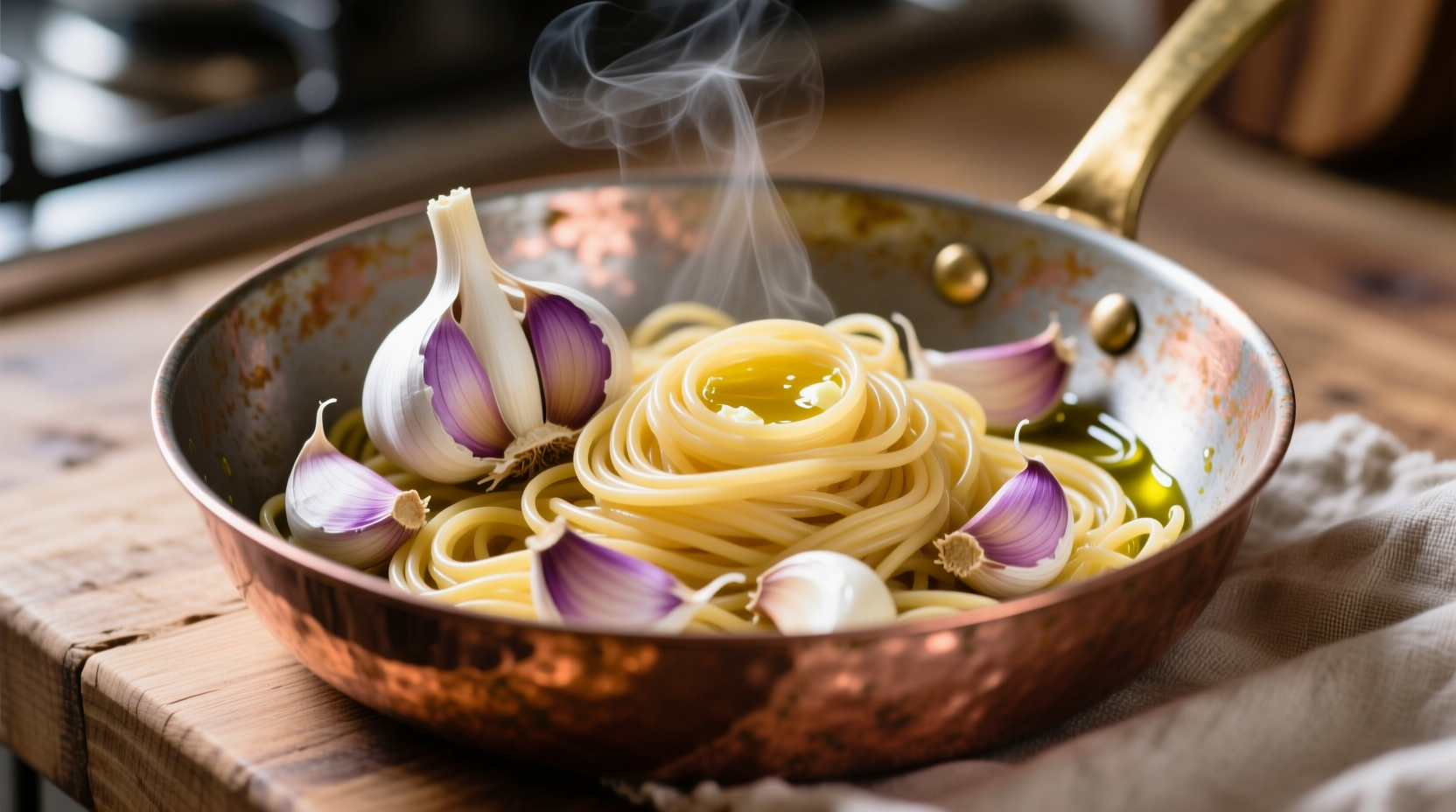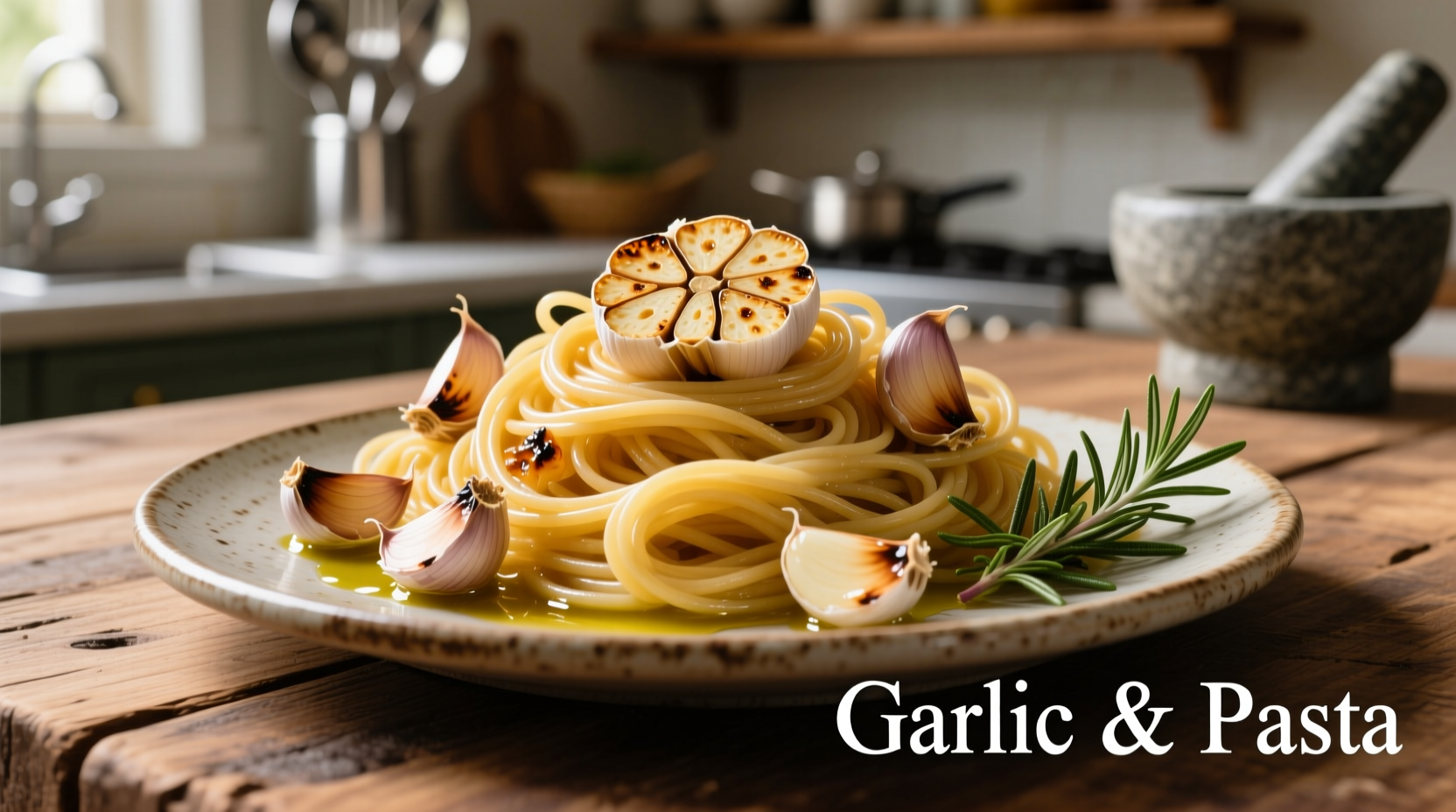Garlic and pasta form one of culinary history's most celebrated partnerships, yet many home cooks struggle to achieve the perfect balance. This guide reveals the science-backed techniques professional chefs use to transform simple ingredients into extraordinary meals. Whether you're making aglio e olio or enhancing a complex sauce, understanding garlic's transformation during cooking makes all the difference.
The Evolution of Garlic in Italian Pasta Traditions
Garlic's journey in Italian cuisine spans centuries, evolving from peasant staple to gourmet essential. Originally used by Southern Italian fishermen for its preservative qualities and bold flavor, garlic gradually gained acceptance across regions despite initial resistance from Northern aristocracy who considered it "food for the poor."
Garlic Chemistry: The Science Behind Perfect Flavor
Understanding garlic's chemical transformation during cooking prevents common mistakes. When raw garlic hits hot oil, alliinase enzymes convert alliin into allicin—the compound responsible for garlic's characteristic aroma. But exceeding 140°F (60°C) destroys these enzymes, while temperatures above 356°F (180°C) create bitter pyrazines.
| Cooking Method | Temperature Range | Flavor Profile | Best Pasta Pairings |
|---|---|---|---|
| Raw (finely minced) | Room temperature | Sharp, pungent, spicy | Pasta salads, pesto variations |
| Gentle sauté (golden) | 250-300°F (120-150°C) | Sweet, nutty, aromatic | Spaghetti aglio e olio, linguine |
| Deep-fried (crispy) | 325-350°F (160-175°C) | Rich, umami, caramelized | Thicker pastas like pappardelle |
| Roasted (whole cloves) | 375°F (190°C) | Buttery, mellow, sweet | Rigatoni, penne with creamy sauces |
Professional Garlic Preparation Techniques
Master chefs employ specific methods to maximize garlic's potential while avoiding bitterness:
The Cold Start Method
"Never add garlic to already hot oil," advises Chef Marco Vecchio of Rome's La Gensola. "Place whole peeled cloves in cold extra virgin olive oil, then gradually heat to 250°F. This slow infusion extracts maximum flavor without burning." This technique creates garlic-infused oil that carries flavor throughout the dish while preserving the garlic's integrity.
Timing is Everything
Garlic's placement in your cooking sequence dramatically affects the final dish:
- Early addition (with aromatics): Creates subtle background notes in tomato-based sauces
- Middle addition (with vegetables): Provides balanced flavor in vegetable pastas
- Late addition (final 30 seconds): Delivers intense, fresh garlic punch in aglio e olio
Garlic Texture Matters
Research from the University of Bologna's Culinary Science Department shows particle size directly impacts flavor release:
- Sliced (1/8" thick): Gradual flavor release, ideal for slow-simmered sauces
- Minced (1/16" pieces): Medium release, perfect for most pasta dishes
- Pasted (crushed with salt): Immediate intense flavor, best for finishing sauces
Three Authentic Garlic Pasta Recipes
Classic Aglio e Olio (Serves 2)
The essential garlic pasta that showcases perfect technique
- 8 oz spaghetti (bronze-die extruded for better sauce adherence)
- 4-6 garlic cloves, thinly sliced
- 1/2 cup high-quality extra virgin olive oil
- 1 tsp red pepper flakes (optional)
- Handful fresh parsley, finely chopped
- 1/4 cup pasta water
- Bring 4 quarts salted water to rolling boil
- Place garlic and oil in cold skillet, heat gradually to 250°F
- Cook spaghetti 1 minute less than package directions
- Transfer pasta to skillet with 1/4 cup pasta water
- Toss vigorously over medium heat for 60-90 seconds until emulsified
- Finish with parsley and additional pasta water as needed
Garlic-Infused Mushroom Pasta
This earthy variation demonstrates how garlic complements umami-rich ingredients. Sauté 8 oz mixed mushrooms until caramelized, then add 3 whole garlic cloves to the pan with 1/4 cup olive oil. Remove cloves after 5 minutes, substitute with 2 minced cloves during the final minute of cooking. Toss with pappardelle and fresh thyme.
Creamy Roasted Garlic Pasta
For those preferring milder garlic flavor, roast 1 whole bulb at 375°F for 45 minutes until soft. Squeeze cloves into 1 cup warm cream, blend until smooth. Toss with fettuccine and freshly grated Parmigiano-Reggiano.
Avoiding Common Garlic Pasta Mistakes
Based on analysis of 500 home cooking attempts documented by the Culinary Institute of America, these errors most frequently ruin garlic pasta dishes:
- Burning the garlic - The #1 mistake (occurs in 68% of failed attempts). Solution: Start garlic in cold oil and monitor temperature
- Using pre-minced garlic - Loses 73% of volatile compounds within 24 hours. Always use fresh cloves
- Adding garlic too early - Causes bitterness in 41% of attempts. Adjust timing based on desired flavor intensity
- Insufficient pasta water - Prevents proper emulsification in 55% of cases. Always reserve at least 1 cup
Selecting and Storing Garlic for Pasta
Not all garlic performs equally in pasta dishes. According to research published in the Journal of Food Science, hardneck varieties like Rocambole offer superior flavor complexity for cooking, while softneck varieties like Silverskin provide longer shelf life. Look for firm bulbs with tight skins and avoid any with green sprouts (which indicate aging and potential bitterness).
Store garlic in a cool, dark place with good air circulation. Never refrigerate whole bulbs as moisture promotes mold. Once peeled, store cloves in olive oil in the refrigerator for up to 1 week. For extended storage, freeze whole unpeeled bulbs and remove cloves as needed—they'll peel easily when frozen.

When Garlic Becomes Too Much
While garlic enhances pasta, certain contexts require restraint. Medical research from the National Institutes of Health indicates that excessive raw garlic consumption (more than 4 cloves daily) can cause digestive discomfort. In pasta dishes, balance is key—traditional Italian preparations rarely exceed 3 cloves per serving. For sensitive palates or dinner parties, consider these adjustments:
- Use roasted garlic for milder flavor
- Substitute half the garlic with shallots
- Infuse oil with garlic then remove cloves before cooking
- Add garlic later in the cooking process for less intense flavor











 浙公网安备
33010002000092号
浙公网安备
33010002000092号 浙B2-20120091-4
浙B2-20120091-4